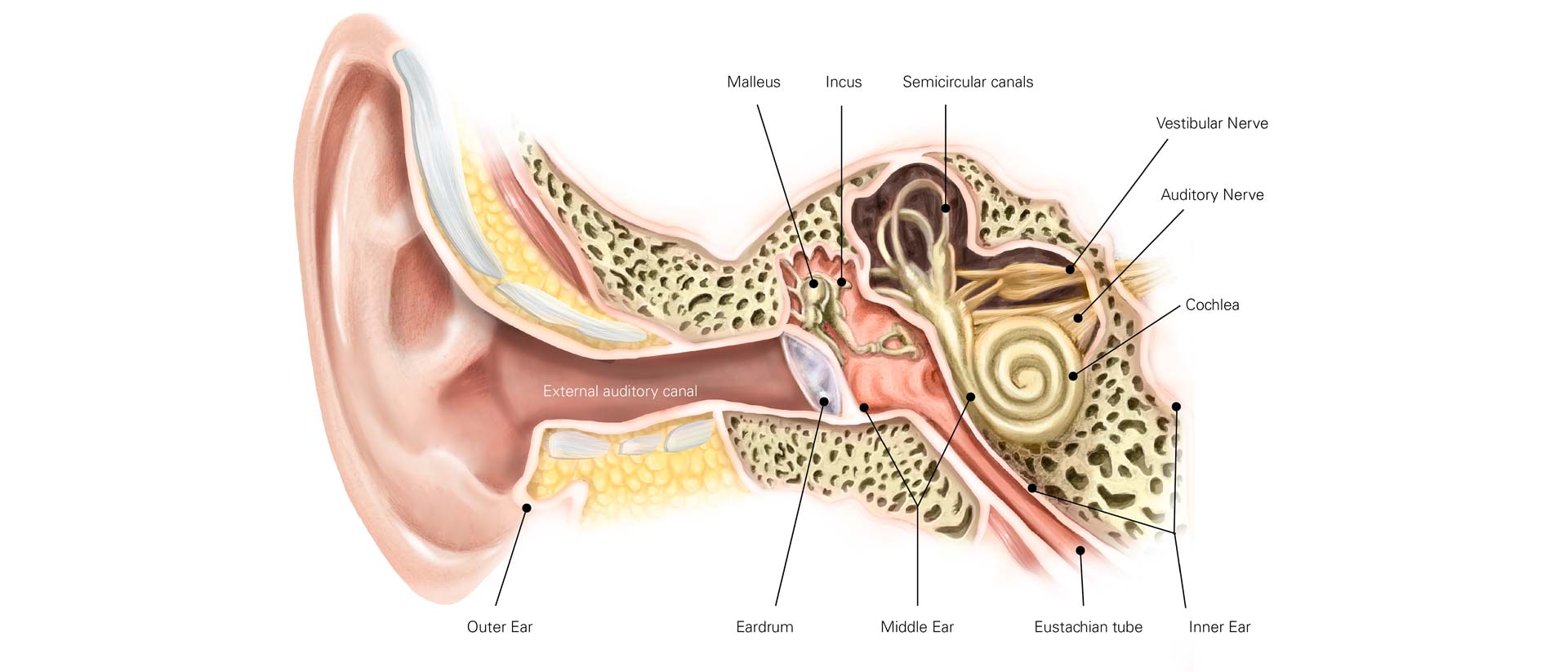At the center: the vestibular system or balance organ
The balance organ is part of the inner ear. The vestibule is the central part of the bony labyrinth in the inner ear. The vestibule gave the balance organ its name: It is also called the vestibular system.

The vestibule
In the vestibule there are two "bubbles" that are connected through delicate canals. These bubbles named utriculus and sacculus, contain sensory hairs cells that reach into a gelatinous membrane – arranged horizontally in the utriculus and vertically in the sacculus. On the surface of the gelatinous layers you find little crystals (ear stones or otoliths). Positional changes of the body make the gelatinous layers move and thus create a shearing force that moves the sensory hairs. This is how we experience gravity and linear acceleration.
The canals
The canals are three semicircular liquid-filled canals that all lead to the vestibule. They are positioned perpendicular to each other and represent the three spatial planes. These U-formed tubes also contain motion-sensitive sensory hair cells. They allow us to perceive rotational movements of our heads.
Transmitting and processing within the nervous system
The information registered by the balance organ is passed along the balance nerve (nervus vestibularis) to certain brain and stem brain areas and processed there. All three components – balance organ in the inner ear, the balance nerve and the associated brain areas – are designated as the balance system.
One distinguishes between the central-vestibular and the peripheral-vestibular part of the balance organ: "central" refers to the central position it has in the brain; that means, central-vestibular causes of vertigo are to be found in the brain itself. "Peripheral" means, "on the outside" and refers to the structures that are not located in the brain – the balance organ in the inner ear and the balance nerve. Talking about non-vestibular causes of vertigo indicates that these causes are entirely outside the balance system. These include e.g. cardiovascular problems or medication side effects, but also disorders of the other sensory systems that are responsible for spatial orientation.
Vertigoheel in your country
Please choose your country. You will leave this website and will be redirected to your local website to get more information about Vertigoheel.